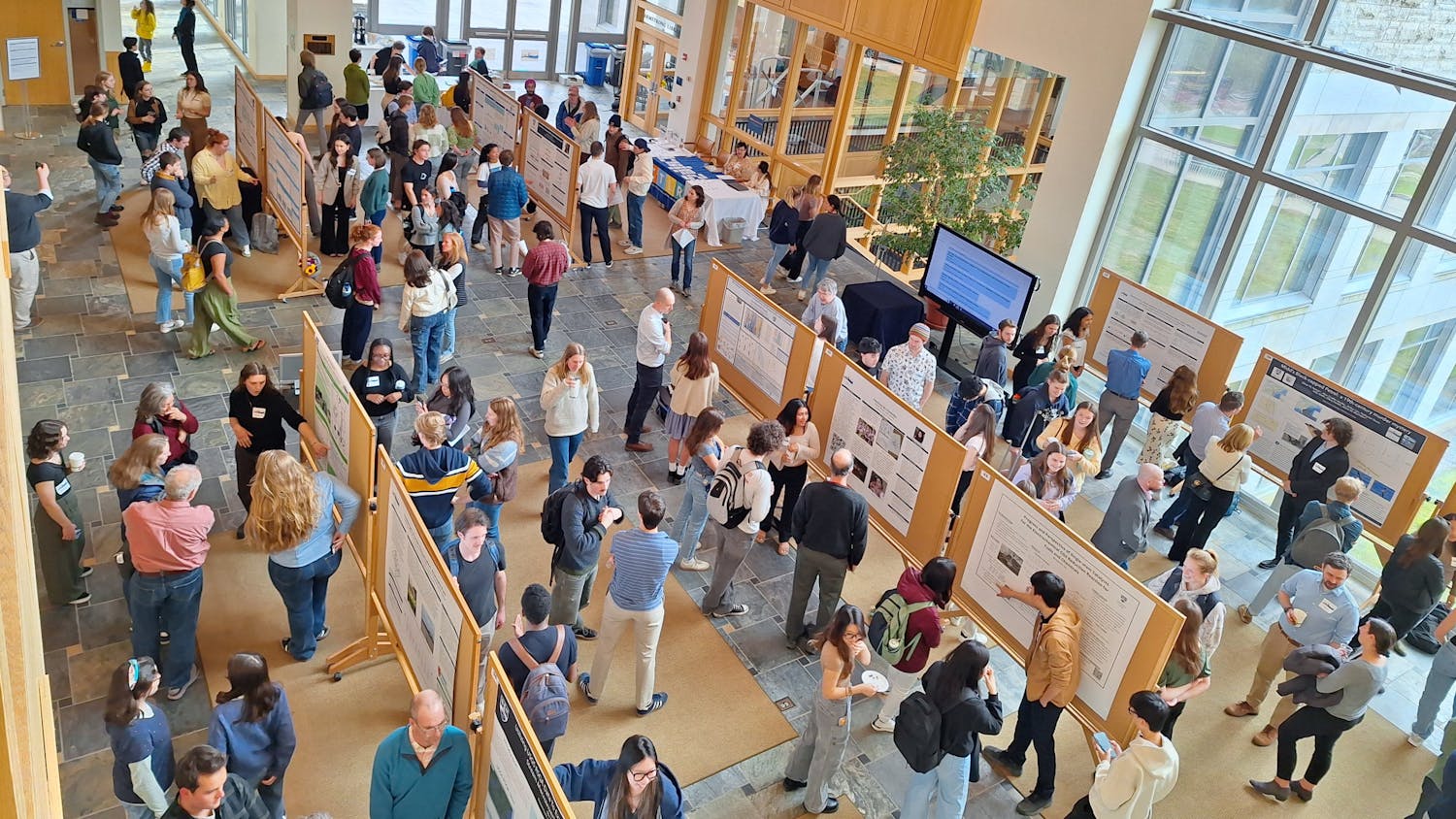Thanks to the work and vision of many students and faculty, the College community will likely see a dramatically new Atwater Commons area this fall. After months of planning and review, the College has begun to finalize plans for the area’s re-landscaping.
The undertaking, more commonly known as “Turf Battle,” began in Fall 2010 with a request for students to submit their own ideas for redesigning the area. In March, three plans were selected as finalists and each group gave a presentation to members of the College community. Instead of choosing just one of the three, all have been combined into a single plan with the help of the Burlington-based landscaping firm, H. Keith Wagner Partnership (HKW-P).
Students, faculty and staff agree that the space between the Atwater buildings has not lived up to its potential, as it is often plagued by mud and offers little opportunity for functional use.
“Just think about the tire tracks through the quad, or the lack of any green grass,” wrote Tim Parsons, College landscape horticulturist and project leader, in an email. “A big part of landscaping is making the outdoors visually appealing and attractive, and the Atwater area [currently] fails on both counts … It seems like it isn't an area to spend time in, just a place to pass through.”
The project, pending permits and implementation, is slated to break ground this summer and be completed before classes begin in September at a cost of $150- $175,000.
Funding for the project was originally planned to come from a $105,000 allocation set aside in the Facilities Services operational budget for 2011, wrote Vice President for Administration and Professor of American Studies Tim Spears in an email. The remaining balance will be funded first by $55,000 in the 2012 budget, and if necessary, by the Renewal and Replacement Reserve, “a large fund that we use on an annual basis to support facilities projects,” Spears added.
Concerns remain, however, about the disruption the construction will have on summer Language School participants on campus, many of whom who will be staying in the Atwater suites. The construction at Atwater will also occur simultaneously with work being done at Forest Hall and the Kevin P. Mahaney ’84 Center for the Arts.
“We might need to slow down the project given the potential impact of the noise on the Language Schools,” Spears said.
Language school alumnus Nina Wright ’12, who studied Chinese during the 2010 session, added that while construction could be disruptive to those who live in the Atwater suites, the damage to the learning environment would likely be minimal because the construction will be far from where most classroom learning occurs.
Spears explained that the design plan currently envisions the creation of “outdoor rooms,” allowing the area to feel more protected rather than the “naked, barren” space it is now. The goal is that the new environment will be small and cozy, separating it from the openness of areas like Battell Beach and the other areas around campus that feature sweeping vistas.
The most popular spaces on campus, Parsons added, “tend to be smaller in scale then you realize, and many have distinct boundaries, such as Proctor Terrace, or outside Ross dining.”
Peter Hirsch ’12, an architecture and environmental studies joint major is optimistic about the designs.
“The planned landscaping for Atwater will give the commons a cohesive visual identity, something that it lacks currently,” Hirsch wrote in an email. “The hardscapes and lawns in the proposal will be much more functional than the current conditions.”
While College officials and HKW-P attempted to carry over many features from the student plans, including the idea for a rain garden, no-mow zones and a patio with informal seating, some ideas had to be eliminated because of subterranean features, such as ledge and utility lines.

The new area will be separated from the Atwater parking lot — visually and, to a certain extent, physically — by plantings around a “rain garden,” or a storm water retention pond with plantings in and around it.
The plantings are designed to block both views of the parking lot and ameliorate the wind tunnel created by the corridor in between the two residence halls. Above the pond will be a no-mow zone where grass would be allowed to grow uninhibited, and above that small section a lawn that could be used for recreation.
The area above the first transverse path will also serve as another lawn for recreation, re-graded from what it is now to allow for play on a flat surface. Separating the newly created levels will be a wall, perpendicular to the Atwater buildings. Throughout the area, four elm trees will be planted to further break up the hard lines of the Atwater buildings.
The plantings — grass, shrubbery and trees — in this area will have the double effect of providing aesthetic appeal and addressing the central concern of hard and often muddy ground.
On the Atwater side of Chateau will be a new 90-person seating area for Atwater dining hall. The informal seating will be within a grove of birch trees to provide much-needed shade in the summer months.
Birch trees will also be planted on the south ends of the Atwater halls and next to Allen to increase the aesthetic appeal of the buildings.
While inviting on the outside, some worry that the trees threaten to cut much-needed light to the rooms in Allen and Chateau.
“I hope that the planned birches next to Allen and Chateau do not create more shade for rooms and the Grand Salon which already have minimal access to sunlight,” Hirsch wrote in an email.
Parsons notes that the birch trees will likely be thin and low, and would not block much sunlight because the rooms are north-facing: they would not ordinarily receive direct light.
Behind Allen, near the “E” parking lot, will be another rain garden similar to the one near the Atwater parking lot that will feature evergreen trees and shrubbery. The planting will eliminate the current dirt trail leading from the parking lot to Atwater dining hall; access will be limited to the stairs under the building and the paths between Allen and the Wright Memorial Theater.
The College hopes to break ground on the project in the coming months, and is waiting on permits to be secured. Students can follow the process and review the plans at http://blogs.middlebury.edu/turfbattle/.
Final plan revitalizes Atwater landscape
Comments



